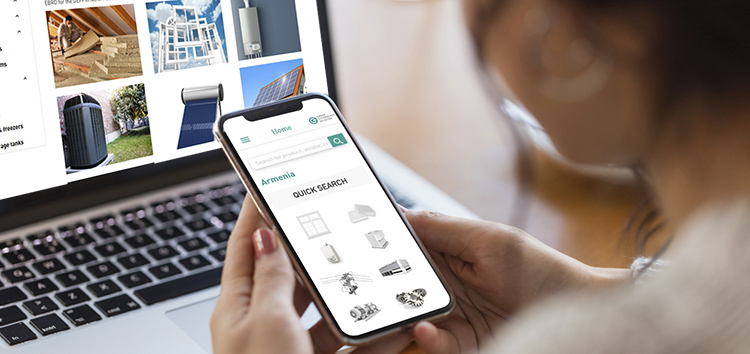 en
en EBRD launches mobile app promoting green technologies

- Tech Selector app identifies around 18,000 best-in-class green technologies
- Mobile app to accelerate the delivery of climate finance
- Businesses, households, manufacturers and vendors to benefit from enhanced access to information in over 10 languages
The EBRD is launching a new mobile app, Tech Selector, which will change how the Bank delivers climate finance to meet the needs of clients who are increasingly using mobile devices for commerce during and beyond the coronavirus pandemic.
Technology and digitalisation continue transforming the way in which the financial sector is operating. Innovative applications of digital technology for financial services such as the Tech Selector are altering the interface between financial institutions and their clients while improving access to information about green technologies and climate finance.
Businesses and homeowners will be able to use their phones to find more than 18,000 green technologies that improve energy efficiency, provide renewable energy, and reduce water use and soil erosion.
Users will also be able to easily identify the technologies that benefit from EBRD support –from the EBRD’s Green Economy Financing Facility (GEFF), the Green Trade Facilitation Programme (Green TFP) or the Finance and Technology Transfer Centre for Climate Change programme (FINTECC).
“The coronavirus pandemic is speeding up the shift to online retail and we see this as an opportunity for greening economies,” explained Ksenia Brockman, EBRD Associate Director for Energy Efficiency and Climate Change.
“Our new app improves access to information in economies where mobile internet is often more advanced than broadband services. The Tech Selector brings green technologies to the fingertips of businesses and homeowners wishing to cut their utility bills, increase their productivity and competitiveness and improve the comfort of their homes or premises,” she added.
The Tech Selector will accelerate the delivery of climate finance under GEFF and other financial instruments of the EBRD with the support of international donors and partners such as the European Union (EU), the Green Climate Fund (GCF) and the Climate Investment Fund (CIF).
The innovative app is based on the Green Technology Selector, the first e-commerce tool launched by the EBRD in 2018. This online shopping-style platform allows users to access a global directory for green technologies and is available across the EBRD regions and beyond.
Among the more than 70 technologies included on the platform and the app, the selection ranges from energy efficient heat pumps and solar panels that produce renewable energy to water efficient drip irrigation systems and no-till seeding machines that support sustainable land management.
Together, the app and the Green Technology Selector platform are creating a marketplace that makes green technologies more easily available while promoting cross-border trade between economies in the EBRD regions.
Manufacturers from around the world can submit their products to the Green Technology Selector and local vendors can register their products and locations. If the offers meet the performance requirements, the EBRD makes them available for clients to search on both the app and the platform.
Businesses and homeowners are able to find vendors and manufacturers, within minutes locate the closest and submit their purchasing plans to EBRD’s financial partners such as local banks, leasing companies and microfinance institutions. This will accelerate the processing times for clients’ requests and make it easier for clients to benefit from EBRD financing.
If a client decides to invest in green technology that is not available in their country, they can import it under the EBRD’s Green TFP.
The EBRD developed the Tech Selector app and the Green Technology Selector platform under the GEFF programme with the support of donor funding from the Austrian Federal Ministry of Finance.
By the end of 2019, the EBRD and its co-financing partners, signed over €4.6 billion under the GEFF programme, which operates through more than 148 partner financial institutions in 27 countries. More than 190,000 clients including small and medium sizes enterprises (SMEs), corporate and residential clients have benefited from GEFF financing. This has led to avoidance of emissions equivalent to 8.6 million tonnes of CO2 per year.


